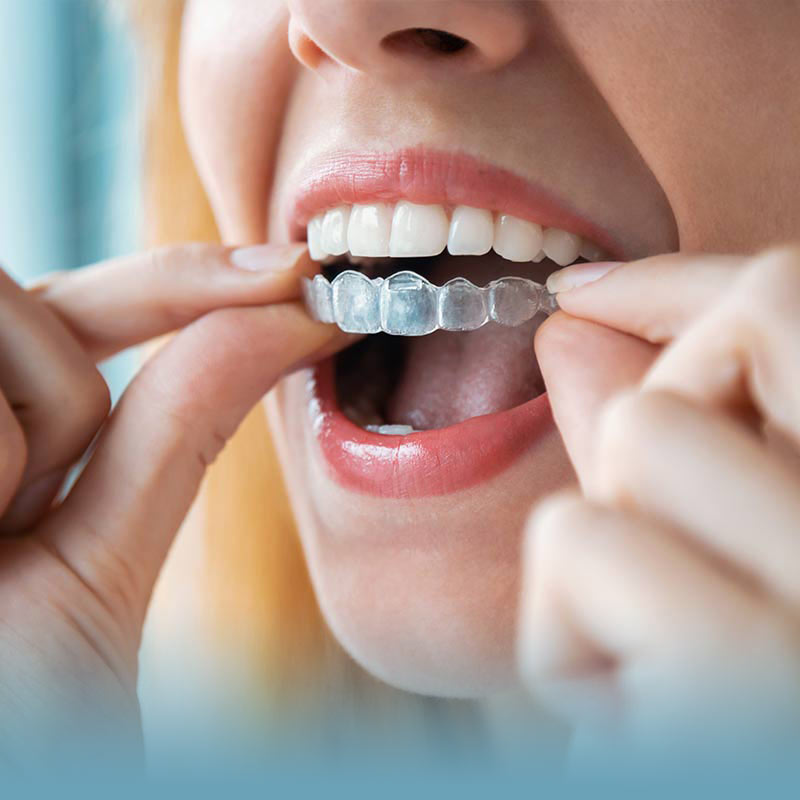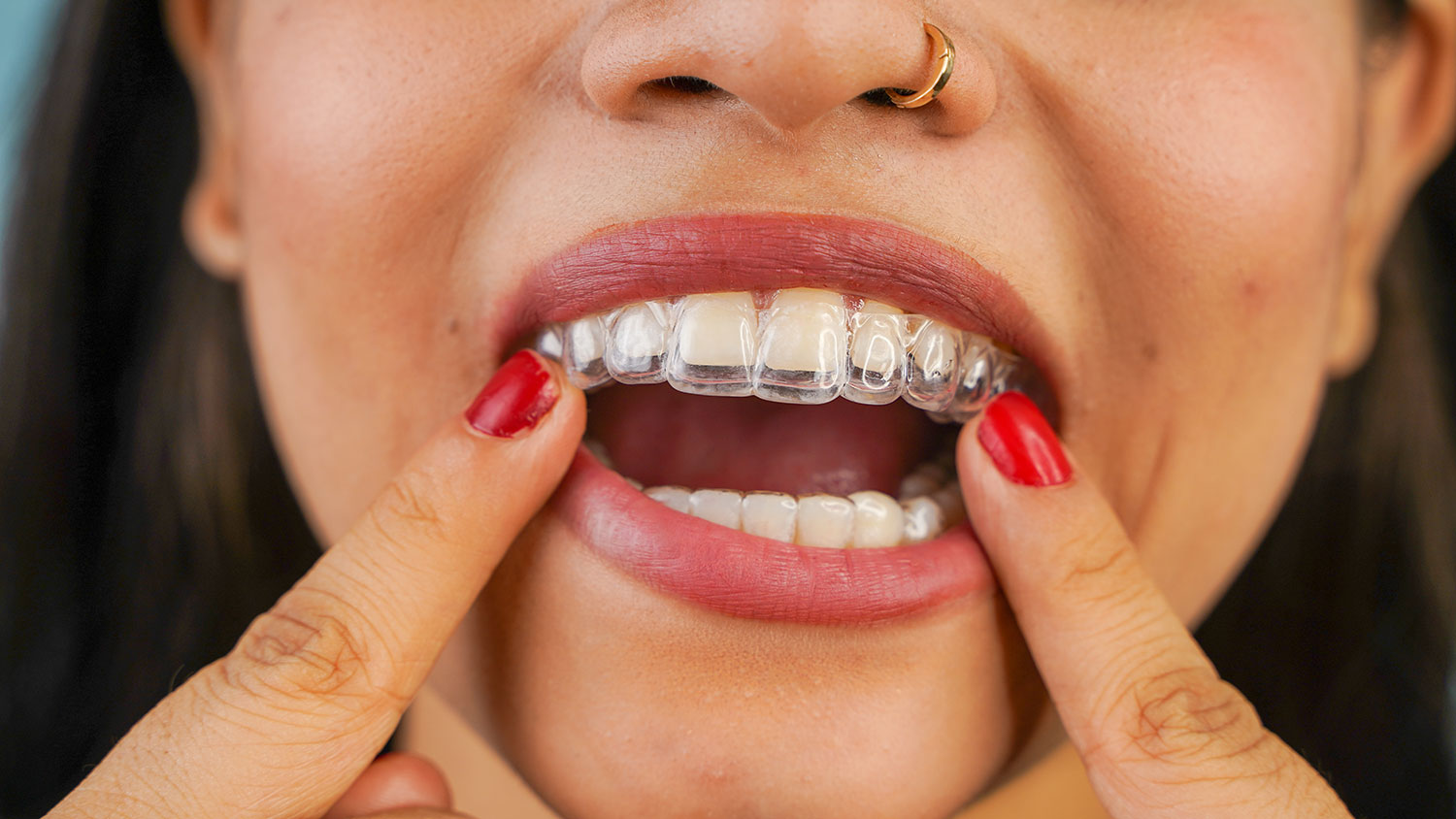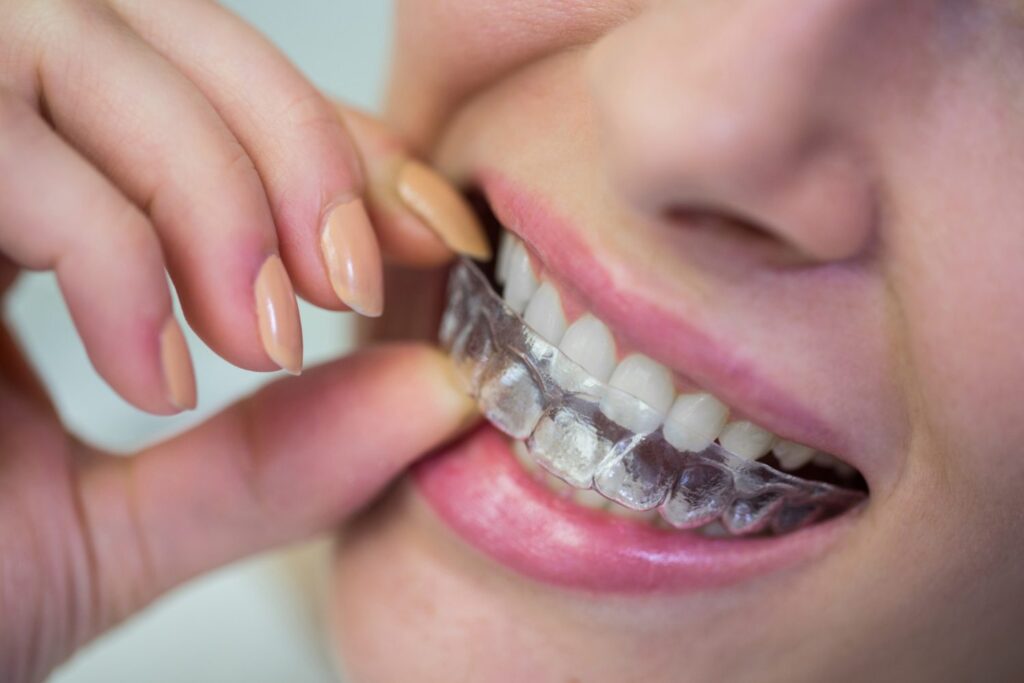Invisalign vs. Standard Dental braces: Which Option Is Right for You?
When considering orthodontic treatment, the selection between Invisalign and traditional dental braces provides numerous important factors that warrant mindful analysis. Invisalign supplies a very discreet alternative with detachable aligners, while typical braces offer a much more visible yet efficient option for extreme imbalance. Each alternative incorporates distinctive advantages and drawbacks related to visual appeals, convenience, treatment duration, and expense. Understanding these nuances is critical for making a notified choice that lines up with your individual preferences and way of life. The question stays: which alternative will best meet your orthodontic requirements and assumptions?
Review of Therapy Alternatives

In comparison, standard dental braces consist of metal brackets and cables that are bound to the teeth. This technique uses continuous pressure gradually to achieve alignment. While reliable for complicated orthodontic issues, typical dental braces need regular gos to for adjustments and can posture obstacles in keeping dental hygiene as a result of the trouble of cleaning about wires and braces.
Both options have their merits, and the selection typically depends upon specific dental conditions, lifestyle choices, and person conformity. Eventually, getting in touch with an orthodontic specialist is crucial for figuring out the most suitable treatment plan customized to specific needs. Recognizing the subtleties of each option can dramatically influence the overall success of orthodontic treatment.
Aesthetic Considerations
A significant factor affecting the selection between Invisalign and conventional braces is the aesthetic charm each treatment uses. Invisalign aligners are crafted from clear plastic, making them practically unnoticeable when put on. This discreet look is particularly appealing to adults and teens who might really feel awkward concerning their orthodontic treatment. The ability to keep an all-natural smile throughout the positioning process can dramatically improve the person's confidence in professional and social settings.
On the other hand, standard braces include steel brackets and cables, which can be more visible. While improvements in orthodontic modern technology have caused the growth of smaller sized braces and tinted elastics, standard dental braces still maintain a more obvious account. For some individuals, the exposure of dental braces may discourage them from looking for necessary treatment.
Inevitably, the selection in between Invisalign and typical braces may depend upon personal preferences pertaining to looks. People that prioritize discretion frequently favor Invisalign, while those who are much less concerned concerning presence may choose standard dental braces. Recognizing the visual implications of each choice is important for making an informed decision that straightens with one's lifestyle and choices.
Comfort and Convenience

In regards to comfort, Invisalign aligners are removable, enabling patients to enjoy their favored foods without limitation and keep optimal dental health. Cleaning and flossing are streamlined, as the aligners can be taken out throughout these regimens, whereas conventional braces require mindful navigating around cables and braces.
In comparison, typical dental braces demand regular changes, making them less convenient for those with active routines. On the whole, the convenience and benefit of Invisalign make it an attractive option for numerous people seeking orthodontic therapy.
Treatment Duration and Performance
While both Invisalign and typical braces are reliable in fixing oral imbalances, the period of treatment can vary dramatically between both options. Typically, Invisalign treatment can take anywhere from 12 to 18 months, depending on the complexity of the case. The clear aligners work by progressively moving click for more teeth into their preferred settings, and normal follow-ups with an orthodontist help make sure progress continues to be on track.
On the other hand, conventional braces often require a longer commitment, generally ranging from 18 months to three years. This is due to their set nature and using cables and braces, which can be a lot more efficient for complex cases and severe misalignments (Invisalign). The therapy performance of typical dental braces is well-documented, as they permit precise changes and better control over tooth movement
Ultimately, the option between Invisalign and typical braces may rest on both the awaited treatment duration and the details dental problems available. Consulting with an orthodontist is essential, as they can supply customized recommendations based on private needs, making certain the chosen approach straightens with preferred timeframes and outcomes.
Expense Contrast and Insurance Choices
Cost plays a substantial role in the decision-making process for individuals considering orthodontic treatment, whether choosing Invisalign or traditional dental braces. Typically, the price of Invisalign ranges from $3,000 to $8,000, while typical braces commonly cost between $2,000 and $6,000. Variables influencing these prices include the intricacy of the situation, the period of therapy, and geographical location.
Many dental insurance coverage plans offer partial insurance coverage for orthodontic therapies, yet the specifics can vary widely. Generally, standard braces might be more often covered by insurance plans contrasted to Invisalign, which some insurance companies classify as an aesthetic treatment.
In addition, a number of orthodontic methods offer adaptable layaway plan, making both treatment options much more available. Individuals should make inquiries regarding prospective financing alternatives and price cuts for upfront settlements. Examining the complete price, including insurance coverage benefits and settlement strategies, is important for making a notified choice that aligns with both visual preferences and spending plan factors to consider.

Final Thought
In recap, the option between Invisalign and conventional dental braces depends upon multiple variables, including visual preferences, comfort, treatment duration, and price. Invisalign uses a very discreet, removable alternative that assists in oral more info here hygiene and nutritional flexibility, while standard dental braces may be preferable for intricate dental issues and often come with a reduced price factor. Ultimately, appointment with an orthodontist is important to examine private conditions and establish the most proper therapy alternative for achieving ideal oral alignment.
When considering orthodontic therapy, the option between Invisalign and standard dental braces offers several company website essential variables that merit careful evaluation.Contrasting Invisalign and traditional braces exposes unique treatment alternatives for orthodontic improvement.While both Invisalign and standard dental braces are effective in dealing with oral misalignments, the period of treatment can differ substantially in between the two options.Cost plays a considerable role in the decision-making process for people thinking about orthodontic therapy, whether opting for Invisalign or standard braces.In summary, the selection between Invisalign and typical dental braces pivots on multiple variables, including visual preferences, convenience, therapy duration, and price.